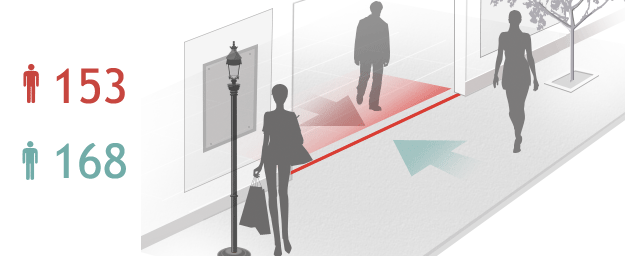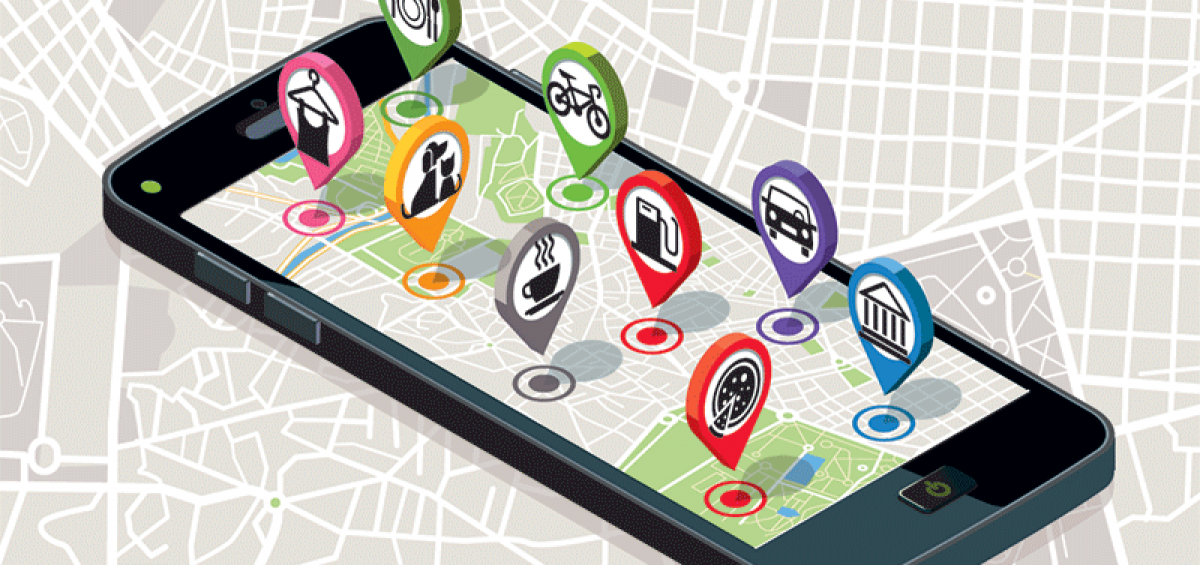How often do you look for a store using your mobile phone?
If you’re like most of us, the answer is likely several times per week. Whether you’re a small retailer, a big box store, or anything in between, you need to be doing local search.
The ubiquity of mobile devices and the on-the-go nature of America have given rise to the local search customer. According to a study by Google, four out of every five consumers uses local search engines to find local retailers. Of those people, 88% use a smart phone, and 84% use a computer or a tablet. What’s more, local searchers are 250% more likely to make a purchase within a day as non-local searchers.
Consumers search for local information from every location you can imagine, on any type of device, and at all points in the purchase process. If you don’t have a robust local marketing strategy, consumers will have a hard time finding you.
Why spend thousands of dollars in AdWords or other mobile advertising if consumers can’t find your physical location?
When a local search accesses your site from search results, it will likely be through the most locally relevant information that Google or Bing can detect. You need to make it easy for Google and Bing to find local information. Otherwise, you won’t even show up in local searches.
Mastering local search engine optimization (SEO) takes time and planning. Like national SEO, it is a process that requires continuous effort. Both local SEO and national SEO use on-page factors, such as links and social indexing to rate the quality of your search ranking.
1. HOW DO YOU MAKE YOUR BUSINESS EASY TO FIND?
Create A Local Google My Business (GMB) Profile
You should begin by creating a local profile on Google My Business (GMB), Bing and other platforms. Your business’s local listing is what will appear in localized search results. Make sure it is as close to 100% complete as possible, including business hours and holidays.
Importance of GMB
Your GMB listing can greatly influence your local ranking. It relies on three key factors: relevance, distance, and prominence.
- Local Relevance: Google uses the detailed business information in your listing to determine the relevance of your store to the searcher’s query.
- Local Distance: Google calculates distance based on what it knows about the searcher’s location if the consumer does not provide a location description. According to Google, 72% of consumers who search for a business on a smartphone visit a store within 5 miles of their location.
- Local Prominence: Google determines prominence based on what it knows about a business from the Web, so SEO best practices apply to local search in the same way they do national search.

2. HOW DO YOU IMPROVE YOUR LOCAL RANKING?
Standardize Your Name, Address and Phone (NAP) Everywhere
You must ensure that your store’s name, address, and phone number (NAP) are correct on your Website, in social media and on location-based listings such as GMB, Yelp, and others.
To boost your local SEO rank, you need to increase the number of citations attributed to your business. Citations are simply any online reference that uses your NAP on the same page and in the same format as your local listing.
The keywords here are “same format”; it is absolutely essential that your NAP appear in precisely the same format every place it appears. Variations in address abbreviations and the formatting of your store name do make a difference. For the purposes of local citation, Store Brand, Inc. is not the same as Storebrand Inc., and 123 Main Street is not the same as 123 Main St.
Boost Your Citation Numbers
Use a location management platform like Yext or Moz Local to publish your GMB information on all major local platforms in the same format. These tools help drive customers to your door by ensuring that your business can be easily found, and they ensure that your NAP is consistent everywhere.
Identify all of your social profiles across all social platforms using a service like KnowEm. Since social profiles use your NAP, you will increase your citation count by ensuring the profiles use your standardized business listing information.
Boost Your Relevance With Reviews
Local listings with many positive reviews earn a higher relevance ranking in GMB, which improves your local search presence. Include GMB profile links in your customer email communications. Make sure that you have a customer review program in place, and let your customers know that they can leave reviews of their experiences on GMB.
Having a well-coordinated customer review effort not only improves your relevance score in local search, it provides a platform to address any customer service issue quickly and efficiently before it becomes a social media nightmare.
3. HOW DOES LOCAL SEO DIFFER FROM NATIONAL SEO?
In general, local SEO best practices mirror national SEO best practices with four distinct differences:
- Use your NAP on every page of your site in the same format as your GMB listing.
- Use city and state names in your title tags, meta descriptions and in your site content.
- Use Schema Local Markup code – also called “store code” – to uniquely identify your store. It aids search engines in identifying and displaying your location.
- Add a Keyhole Markup Language (KML) file to your site. KML is a file format that is used to display geographic data in an Earth browser, such as Google Earth.
4. HOW DO YOU MEASURE LOCAL SEO SUCCESS?
Fortunately, in-store analytics are now on par with online analytics. In the past, brick and mortar stores did not have the analytics to identify which aspects of their business work well and which could use improvement. When it comes to local SEO effectiveness, measuring performance is a simple matter of counting customers entering the business.
Conversion Rate Percentage
Discreet measures such as store traffic counting can assess local SEO effectiveness by identifying foot traffic patterns and automatically calculating the conversion rate, which is: (total transactions / total shopper traffic) * 100. The data is collected using an electronic door counter and information from your Point-of-Sale (POS) system. By comparing shopper traffic data and conversion rates pre- and post-local SEO efforts, you can measure the change in both your traffic and conversion rates.
Shopper Value
Determine if your shopper value (total sales / total shopper traffic) is increasing as a result of your local SEO efforts by using sales data from the POS system and the shopper counts from a door traffic sensor system over time. By pairing this number with conversion rate, you can determine how much your business is growing from your local SEO efforts.
Year-Over-Year Percent Traffic Change
Use this high-level metric to see if store traffic increased year-over-year as a result of your local SEO efforts. This metric can yield results that will help you assess the effectiveness of your local search initiatives.
Conduct A/B Testing
Using straightforward A/B testing, you can determine if your local SEO efforts improved the metrics for a set of “test” stores versus a “control group” of stores in order to compare multiple locations to gain chain-wide insights.

5. HOW DOES LOCAL SEARCH AFFECT ADVERTISING?
Radius Bidding
In order to get the most from your advertising dollars when it comes to local search, use radius bidding to reach customers near your stores. Build a local attribution model for local searches as part of your Web analytics reporting.
Location Extensions
Consumers show a preference for location-based ads, and they expect ads to be relevant to their city, zip code or immediate surroundings. This means that you should use local extensions in your local advertising and use local bid adjustments to fine-tune bids for specific areas.
Importance of Getting Local Ads Right
- 67% of smartphone users expect ads to be customized to their city and / or zip code
- 68% of local searchers on smartphones use “get directions” or “call” buttons
- 32% of local searchers visited stores or made purchases
6. HOW ELSE CAN I BOOST MY LOCAL SEO EFFORTS?
Local content marketing remains a great way to build brand loyalty among existing customers. Articles and blogs relating to topics customers find relevant will continue to be a gold standard by which you can improve your local SEO and national SEO rankings. In addition, the capability of Facebook and the Google Display Network to target audiences based on demographic and geographic criteria means the ROI on paid local media is stronger than it has ever been.
7. HOW MUCH DOES LOCAL SEO COST?
Whether you should take local SEO in-house or outsource largely depends on your budget. There are a number of low-cost tools, such as AWR Cloud that will allow you to track your localization rankings easily. In addition, there are free tools like Google Analytics and Google Webmaster that will allow you to track keyword impressions. As with anything in retail marketing, the benefits you reap often match your level of investment.
8. HOW MUCH IS RETAIL ANALYTICS?
If you’re going to invest in local SEO, you absolutely must measure the results of the campaigns. Best way is to measure store traffic. Door counters, people counting sensors, WiFi location analytics and other technology allows you to accurately pair store traffic and local SEO success. Pricing varies depending on the vendor you choose and technology you prefer.
CountBOX offers people counting analytics starting at $30/month* sensor. Additional free integration of POS systems to visualize conversion rate and shopper value data can increase the value of your insights. According to Google, 50% of consumers who conduct a local search on their smartphone visit a store within a day. You can’t afford not to invest in local SEO and retail analytics to measure it.

